It is customary to refer to human parasites as all living creatures at their own expense. These are bacteria, fungi, worms. Parasites in the human body are divided into internal and external. Worms-all kinds of parasitic worms are the most unpleasant and cause the greatest damage to the body.
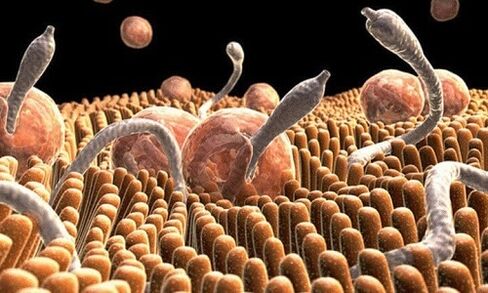
Parasites and the human body
The organisms that parasitize the human body can be external or internal. External includes:
- Mosquito
- Water ches.
- Louse
- Microorganisms that cause sc sores.
But there are more creatures who like to settle down in the body. These include:
- bacterial.
- simplest.
- worm.
- Fungus
The external and internal organization of the parasite is the simplest. Since they do not need to evolve for survival, their organization is greatly simplified.
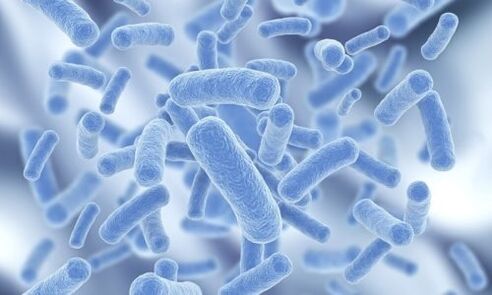
Many creatures like to settle down in the body. For example, it can be bacteria.
Without host organisms, they will not be able to survive because they cannot obtain their own food. But they reproduce very quickly almost without exception, especially under the right conditions. There is no place to drive them immediately.
They differ geographically. Some plants can be seen everywhere, and no climate is their obstacle. Others only live in tropical countries, but on the human body, they can easily be taken anywhere else. In the body, they also settle in different places.
The parasites in the cavity are satisfied by the hollow part of the human body, while the tissue parasites live in the tissues.
Parasites (mainly worms) also have different development cycles. Some grow underground (biological worms) first, and then move to living creatures. Other people need to develop in any other organism first, not alone. Other people in an adult state can also transfer to another person or re-infect themselves.
It is wrong to assume that infection can only occur through unclean hands. Some worm eggs can survive for six months outside the nutrient medium and adhere well to animal hair. Eggs can also survive in dangerous environments-if you cook meat or fish incorrectly, the entire nest will squirm.

It is worth cooking the meat incorrectly, because a whole mass of worms will settle in your body.
Human endoparasites
Parasites are divided into internal parasites and external parasites. Internal parasites-those that live on the inside, external parasites-are on the outside. Endoparasites can settle in almost all internal organs and tissues of the human body. They are divided according to localization. The internal parasites are:
- The endoparasites of internal organs are connected to the external environment.
They happen to be located in organs connected to the external environment, and vice versa: parasites do not choose to "breath". These organs include the intestines, lungs and human genitourinary system. They are amoeba, worms and parasitic flagellates.
- Parasites in the blood.
They live in human blood. They can live in plasma, white blood cells, and red blood cells. These are trypanosomiasis, microfilariasis or blood filariasis.
- Parasites in tissues.
Those endoparasites who choose body tissue as their place of residence. Muscle tissue, brain, cartilage, connective tissue. Even in the nerve fibers, the parasites in the tissue can settle down. These are Finnish tapeworms, trypanosoma, myxosporeans, tri-nematodes, etc.

Endoparasites can choose the brain as their place of residence.
It is quite arbitrary to define the type of parasite by its localized location. Many species are able to migrate through various internal organs and traverse the host's body regularly. The reproduction process can take place in one place, and the organisms will exist directly and forage in another place. The place where the parasite settles will be regarded as the place where it is conditionally located.
Although many parasite systems have been simplified, their life cycles are still quite complex.
Some species must change several hosts throughout their lives, and these hosts may belong to different biological species. Others can only survive in one species, but they may need intermediate hosts. In one person, they reproduce, in another, they grow and mature. In such a complex life cycle, its sexual function is significantly enhanced. In order to survive in the body, the parasites must multiply rapidly.
worm
There are three main types of worms, also called worms. it:
- Nematodes, they are roundworms.
- est insects, banded inner parasites.
- Flukes (also called flukes).

Ground worms began to survive in the earth's soil.
In addition, it can be divided according to the duration of the life cycle and the number of locations passed along the way. There are also three types:
Earth Spirit
"Earth" is the earth. These worms can infect people only after the mature stage, and thus begin to survive in the earth's soil. They do not need an intermediate host; the eggs enter the soil together with human feces. Until the larval stage, they only develop in the warm season.
Such worms include roundworms, intestines, mosquito killers, and whipworms.
The larvae of these parasites can enter the human body through unwashed vegetables or direct contact with the soil.
Biological worm
These are parasitic worms, and their life stages pass through multiple hosts. Depending on the type of worm, there can be two or more intermediate hosts. Some parasites can only change one person. Others use the creatures of other creatures for development before finally entering the human body.

You may be infected through pets or contact with others and eating half-raw meat. Biological worms include cattle tapeworm, Echinococcus occidentalis, wide tapeworm, Chinese china and so on.
Infectious worm
These worms need neither soil nor intermediate hosts. They are located in a very comfortable organism and have gone through all stages of the life cycle. The larvae are excreted directly from the human body, and they can spread freely when in contact with the surface of the family and other people.
Worms can live in different organs and systems of the human body and regularly migrate from one part of the body to another.
The list of diseases caused by worms is very extensive. Only after passing all the tests required to determine the type of test can it be determined which parasites live in the body and which treatment can be started.
Roundworm
The most common in the human environment is roundworms, also known as nematodes. There are more than 24, 000 species of nematodes in the world.
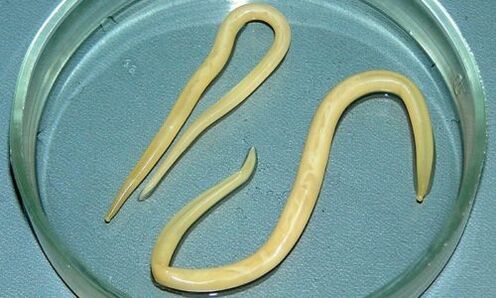
The most common human nematode is the roundworm.
Because of their shape, they are called circles, and if you make a cross section, they will be displayed. The most common nematodes in humans:
- scar insect disease.
- insect.
- Trichina.
- Vlasoglava.
Helminthiasis (called as worm disease) starts from direct contact with the soil infected by the worm, or eating unwashed fruits and vegetables first. The parasites begin to develop in the intestines, and then enter the human circulatory system, from there into various internal organs, and reach the oral cavity. One person swallows the adult parasite again without knowing it. They feed on undigested food. Insect waste is highly toxic. There is no vaccine for ass worms; infection can only be prevented by observing personal hygiene rules.
Worm infection is called intestinal helminthiasis. These are small worms (5-10 mm) attached to the intestinal wall. They feed on blood and intestinal contents. They lay their eggs under the skin and leave the anus while the owner sleeps. Due to itching, people will scratch the anal area, larvae will enter the skin and hands, and can easily spread to other people in houses or public places. Enteropathy has no painful symptoms; it is extremely difficult to detect pinworm infection at the initial stage.
Trichinella is also Trichina, a round worm. It chooses an animal or a person as its owner.
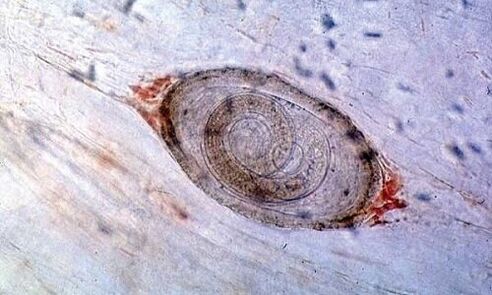
Trichinella spiralis is a parasite that infects the human body and causes the dangerous helminthiasis trichinosis.
They begin to develop in the striated muscle area of the body and then are redirected to the small intestine. In advanced infection cases, there are approximately 15, 000 Trichina eggs per kilogram of muscle tissue. These parasites can cause fatal diseases, named after their source-Trichinosis.
The whipworm gets its name from its appearance. The front part of their small body is linear, and there is an esophagus in it.
The back is wider, and the rest of the internal organs of the parasite are located in it. Whipworms can be up to 50 mm long. It feeds on blood and tissue fluid. Trichomoniasis causes this disease.
worm
There are approximately 3, 500 known species of tapeworms worldwide, also known as cestodes. These flatworms have no digestive system at all, and the diseases they cause are called estrogen.
The most common Cestodoses:
Cysticercosis
The disease is caused by the larva of the pork tapeworm, which enters the body from dirty hands through dirty food.
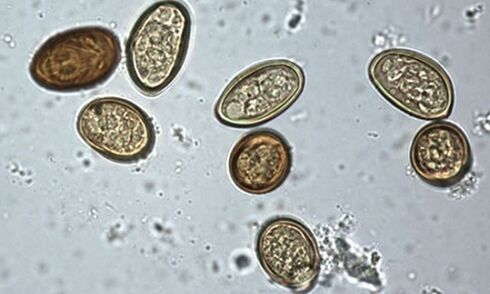
The disease affects the skin, bones, internal organs, brain and spinal cord. In most cases, the parasites are sent to the brain (accounting for 60% of infection cases). The diagnosis is based on the appearance of round structures on the skin. The disease has been treated; in the case of a central nervous system infection, the prognosis may be unsatisfactory.
Echinococcosis
It is located in the liver, lungs and many other internal organs. Echinococcus larvae can trigger the disease. They can develop in a person's body for several years.
Infection occurs through contact with animals, picking berries and fruits, and drinking contaminated water.
The course of the disease is not obvious, it can develop over many years, and the result can only be discovered accidentally.
Pneumococcal disease
Pneumococcal disease is caused by the larvae of pneumococcal worms. The disease is similar to echinococcosis but is more serious. Affects the lungs and kidneys. Without treatment, the disease is extremely likely to be fatal due to the development of liver failure.

Pneumococcal disease most often affects the kidneys.
Teniarinhoz
Teniarinhoz is caused by the cattle tapeworm. It parasitizes in tapeworms in the human small intestine area, and the development period is 2. 5-4 months. The prognosis of treatment is usually favorable. Parasites can enter people who are infected with raw meat or insufficiently heat-treated meat.
Insects are prolific. Their residual sensitivity is reduced the most, and there is no digestive system at all. Without a host, this parasite cannot develop.
ke worm
A liar is a liar. They are flat worms whose shape resembles the oval leaves of a tree.
Some species of flukes may be up to one and a half meters long.
They most often enter the human body through fish or other seafood. There are about 7, 200 species of trematodes known, 40 of which live in humans and cause trematodes (serious diseases caused by infection).
The most common scams:
Liver fluke
It is distributed globally and can exist in animals and humans. The life cycle of organisms is complex, and parasites can change the host.
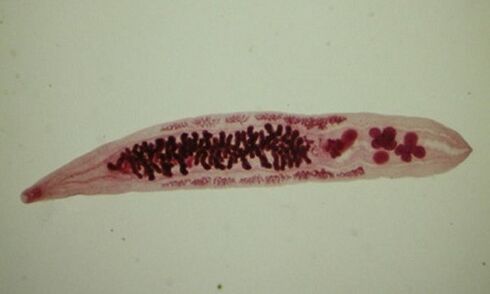
The most common fluke is liver fluke.
Schistosoma
Schistosoma larvae can penetrate the skin or mucous membranes. The life cycle is complex, and they feed on blood. A female can produce about 3, 000 eggs per day, and these parasitic worms are very reproductive.
Other liver flukes
They can cause aspirin gall bladder disease, a type of helminthiasis that spreads mainly in the liver. They are toxic to the human body.
The digestive system of fl worms is developed, and it has reproductive and excretory systems.
The remaining systems are in poor health. Flukes feed on blood, skin epithelial cells and intestinal contents. They can live almost anywhere: from the liver to the conjunctival sac.
Other types of endoparasites
The remaining internal parasites are various bacteria that cause dangerous diseases, and they are also the simplest microorganisms. The fungus that spreads in the human body also belongs to the part of endoparasites.
Many beneficial and harmful microorganisms live in the human body. Some of them can cause quite dangerous diseases and may even lead to death. It is not always possible to immediately recognize the presence of parasites in one's body, but diagnosing the infection as early as possible will provide a better chance for a complete cure. If an intrusion is suspected, it is recommended that a doctor perform a thorough examination immediately.



































